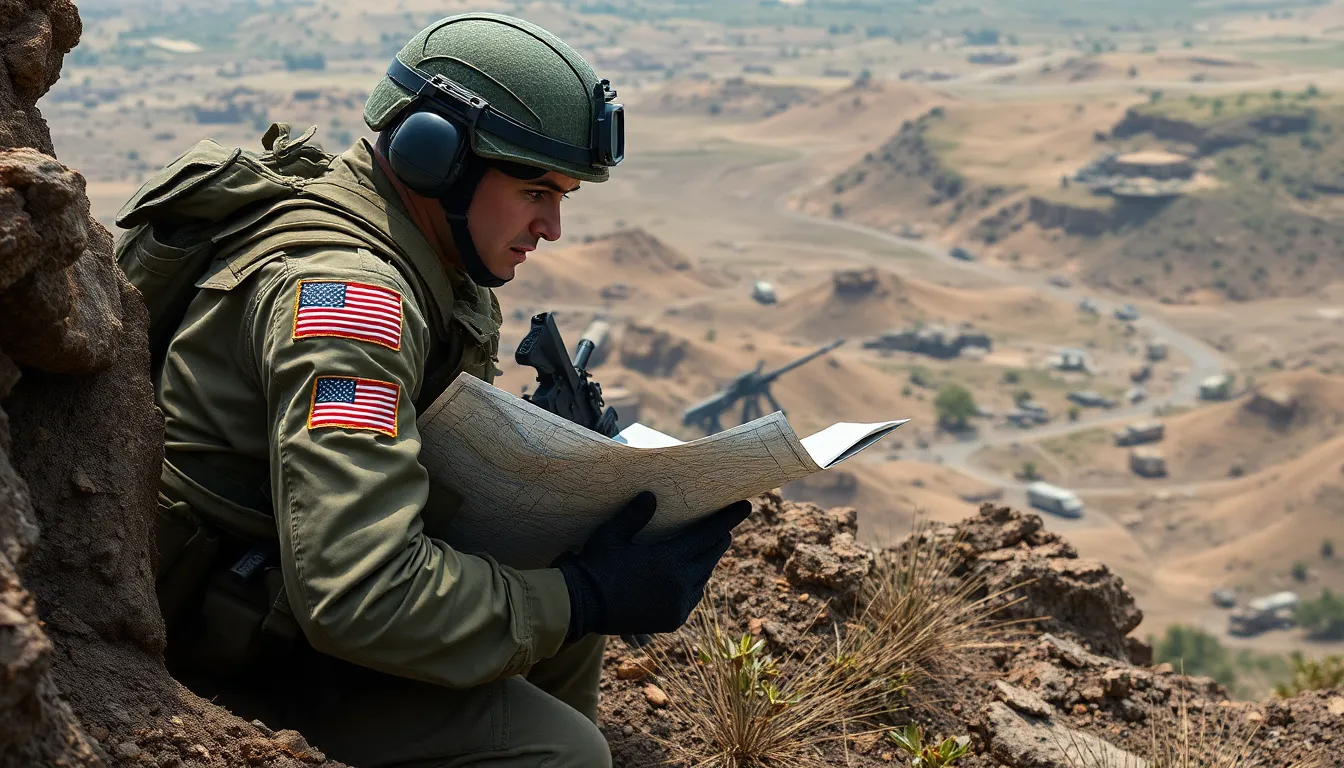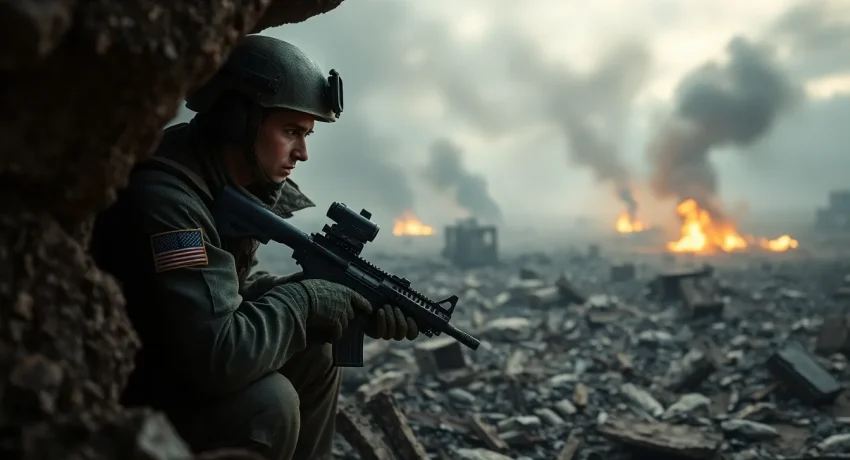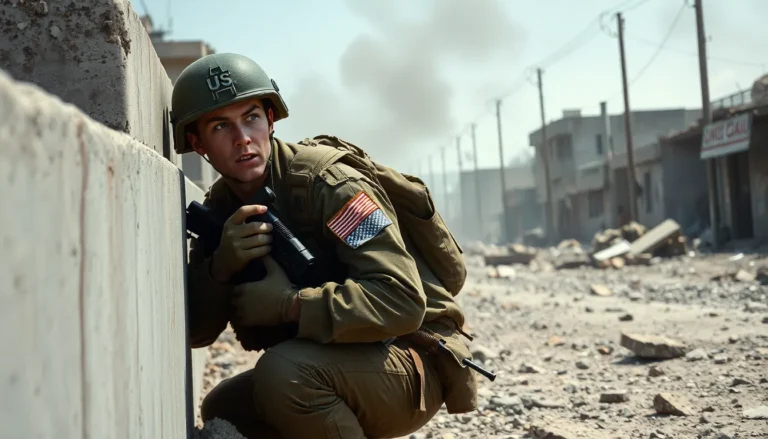In the chaotic world of battlefield gameplay, survival isn’t just about luck; it’s a strategic dance with bullets and explosions. Whether players are dodging grenades like a pro or planning the perfect ambush, mastering the art of combat can turn the tide of any match. But fear not, aspiring warriors! With the right tips and tricks, even the most inexperienced soldier can rise to legendary status.
Table of Contents
ToggleUnderstanding Battlefield Gameplay
Mastering battlefield gameplay involves comprehending the core mechanics and implementing effective strategies. Familiarity with the game environment and tools enhances a player’s performance and potential success.
Game Mechanics Overview
Various game mechanics play crucial roles in battlefield gameplay. Movement includes sprinting, crouching, and leaning, which allows players to navigate effectively. Cover mechanics provide defense against enemy fire. Understanding weapon types and their characteristics is essential, as each weapon behaves differently in combat. Additionally, players can utilize gadgets and equipment to gain tactical advantages. Comprehending these mechanics forms the foundation for effective gameplay.
Importance of Strategy
Strategy influences success in battlefield gameplay. Developing a plan before engagements can lead to significant advantages, enabling players to anticipate enemy movements. Teamwork enhances effectiveness, as coordinating with squad members maximizes impact on the battlefield. Planning ambushes or flanking maneuvers can disrupt opponents before they mount an offensive. Observing the map layout helps identify strategic points for control. Adapting strategies to evolving situations can make the difference between victory and defeat.
Essential Battlefield Gameplay Tips

Mastering battlefield gameplay requires awareness, strategy, and the right tools. Implementing these essential tips can enhance performance significantly.
Map Awareness
Understanding the map is crucial for success. Players must familiarize themselves with key locations such as choke points, capture zones, and high ground. Knowing terrain types allows for strategic movement and cover selection. Recognizing landmarks enhances navigation and helps anticipate enemy movements. Monitoring mini-maps keeps players aware of teammate positions and objectives. Prioritize situational awareness to adjust strategies in real-time. Communicating map insights with teammates can coordinate attacks effectively, leading to favorable outcomes.
Weapon Selection
Choosing the right weapon impacts gameplay style. Each weapon has unique strengths suitable for various situations. Players should evaluate weapon characteristics such as fire rate, damage, and range to match their combat approach. For instance, assault rifles excel in mid-range battles, while shotguns suit close encounters. Experimenting with attachments can enhance weapon performance further. Selecting weapons based on map layout and team composition maximizes effectiveness. Prioritizing flexibility in weapon choice allows for adaptation to enemy tactics and changing dynamics on the battlefield.
Team Coordination
Effective coordination significantly enhances gameplay in a battlefield environment. Players who work together accomplish objectives more efficiently and adapt strategies in real-time.
Communication Techniques
Clear communication stands as the backbone of team coordination. Players should utilize voice chat or in-game messaging to relay crucial information about enemy positions and movement. Maintaining concise updates helps teammates stay informed and prepared. Calling out specific locations, like “enemy at point A,” allows for swift reactions. Regular check-ins on teammates’ statuses keep everyone aligned. Using predefined signals or codes can streamline conversations and reduce confusion, ensuring everyone understands the ongoing strategies.
Roles and Responsibilities
Understanding team roles proves essential for maximizing effectiveness in gameplay. Each member should clearly define their role, whether as a scout, sniper, medic, or support. Assigning roles according to individual strengths allows players to optimize performance during engagements. For example, scouts gather intel while snipers cover objectives from a distance. Medics should prioritize rescuing downed teammates to sustain team momentum. Establishing a chain of command can help streamline decision-making during high-pressure situations, allowing teams to execute strategies more fluidly.
Improving Your Skills
Improving skills in battlefield gameplay requires dedication and practice. Players benefit from employing diverse methods to refine their techniques and enhance performance.
Practice Methods
Exercising various practice methods leads to significant skill improvement. Engaging in target drills develops accuracy and reflexes. Participating in custom matches allows players to experiment with different weapons without the pressure of a live game. Collaborating with teammates during practice sessions fosters better communication. Individuals should focus on mastering movement to avoid becoming easy targets, while utilizing cover effectively can enhance survivability. Dedication to controlled practice sessions provides essential insights into personal strengths and weaknesses.
Analyzing Game Footage
Observing game footage reveals valuable insights into gameplay patterns. Players can identify mistakes and understand situational responses through recorded matches. Reviewing different players’ strategies showcases alternative approaches to combat scenarios. They should note successful engagements and learn which tactics work well against opponents. Analyzing decision-making in various situations fosters adaptability during live encounters. Utilizing analytical tools can further streamline this process, offering detailed breakdowns for deeper understanding. Emphasizing feedback from game footage accelerates skill enhancement.
Mastering battlefield gameplay requires a combination of strategy skill and teamwork. By focusing on key elements like map awareness and weapon selection players can navigate challenges more effectively. Communication is essential for coordinating attacks and ensuring everyone understands their roles.
Dedication to practice and analysis of gameplay can lead to significant improvements. Players should embrace the learning process and adapt their strategies based on experiences. With time and effort anyone can elevate their performance and thrive in the intense environment of battlefield combat.




